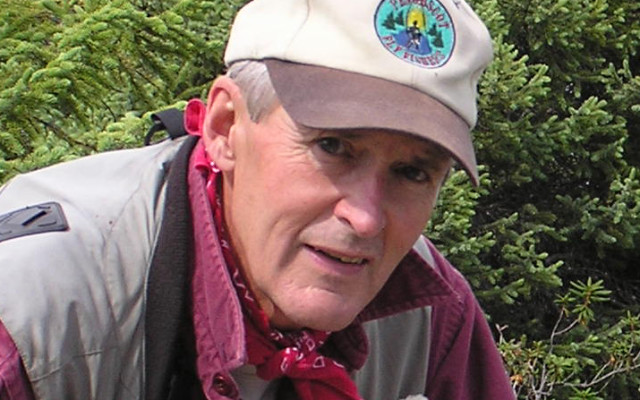
Maine doesn’t need a federal high peaks refuge
By V. Paul Reynolds
With clipboards in hand and a big bag of our tax money, the U.S, Fish and Wildlife Service yet again has designs on “protecting,†through Federal designation, some of the high peaks in Western Maine. USFWS says it wants this area because it contains habitat that is “under-represented in the national refuge system.â€
Although USFWS has not earmarked specific parcels or tracts of wildlands, it did hold a public exploratory meeting in the Carrabassett Valley. USFWS spokesman Nancy Perlson says the goal is to create a 5- to 15,000-acre refuge within a 200,000-acre area that is currently being evaluated.
Maine’s reaction to all of this? One respected Maine outdoor publication has argued in an editorial that Maine folks should keep an open mind and weigh the pros and cons. “Hear them out,†the editorial counseled.
Other stakeholders have not been so inclined. The federal trial balloon has been opposed at the outset by the Sportsman’s Alliance of Maine (SAM), The Professional Maine Guide’s Association, the Maine Trappers Association and other state conservation organizations.
SAM’s position is unequivocal:
In the last legislative session, our organization worked with our outdoor partners to establish the Land for Maine’s Trust Fund, providing a mechanism for long term conservation funding. The LMF program is a very popular program because it is managed by the State Legislature and accountable to the Maine people. It also has statutory protections that ensure public access for traditional recreation like hunting, fishing, trapping, snowmobiling and all forms of recreation.
The U.S. Fish and Wildlife Service, National Wildlife Refuge system is managed by Congress and imposes far more restrictions on public use, than the LMF Program; in addition, changes to management of wildlife and recreational access on a refuge is far more susceptible to lawsuits and the whims of unaccountable lawmakers elected in other states.
As SAM points out, Maine has done a commendable job conserving wildlands without federal help. The Bureau of Public Lands has conserved 600,000 acres made up of 37 separate parcels. Among these is the 10,000-acre Bigelow Preserve, which includes at least one of these high peaks.
When the federal government pledges to you that a Maine High Peaks Refuge will permit all manner of outdoor recreation, including hunting and snowmobiling, do you honestly think you can take that to the bank? As SAM points out above, USFWS and its policies are at the whims of unaccountable national lawmakers from other states. As one Maine forester from Western Maine said, if we have a problem with state agencies, we go to Augusta. If we have a problem with the Feds we have to go to Washington and through six layers of bureaucracy.â€
Additionally, the USFWS and its wilderness holdings are constantly in the litigatory crosshairs of national environmental organizations that are unabashedly anti-hunting. For example, in Montana last week, the Center for Biological Diversity filed a lawsuit against USFWS to stop a new rule that USFWS issued to increase fishing and hunting opportunities in 147 national wildlife refuges in Montana.
The Land for Maine’s Future Program has proven an effective model for conserving important tracts of Maine wild lands and it will continue to do so. Best of all, unlike national wildlife refuges, it is managed by the state legislature and is accountable to Maine’s citizens.
Make no mistake, there are always strings attached when the Feds come calling. If Maine is smart, it will in a polite way tell USFWS that we know how to look after our own peaks, thank you very much.
The author is editor of the Northwoods Sporting Journal. He is also a Maine Guide and host of a weekly radio program “Maine Outdoors” heard Sundays at 7 p.m. on The Voice of Maine News-Talk Network. He has authored three books. Online purchase information is available at www.sportingjournal.com.